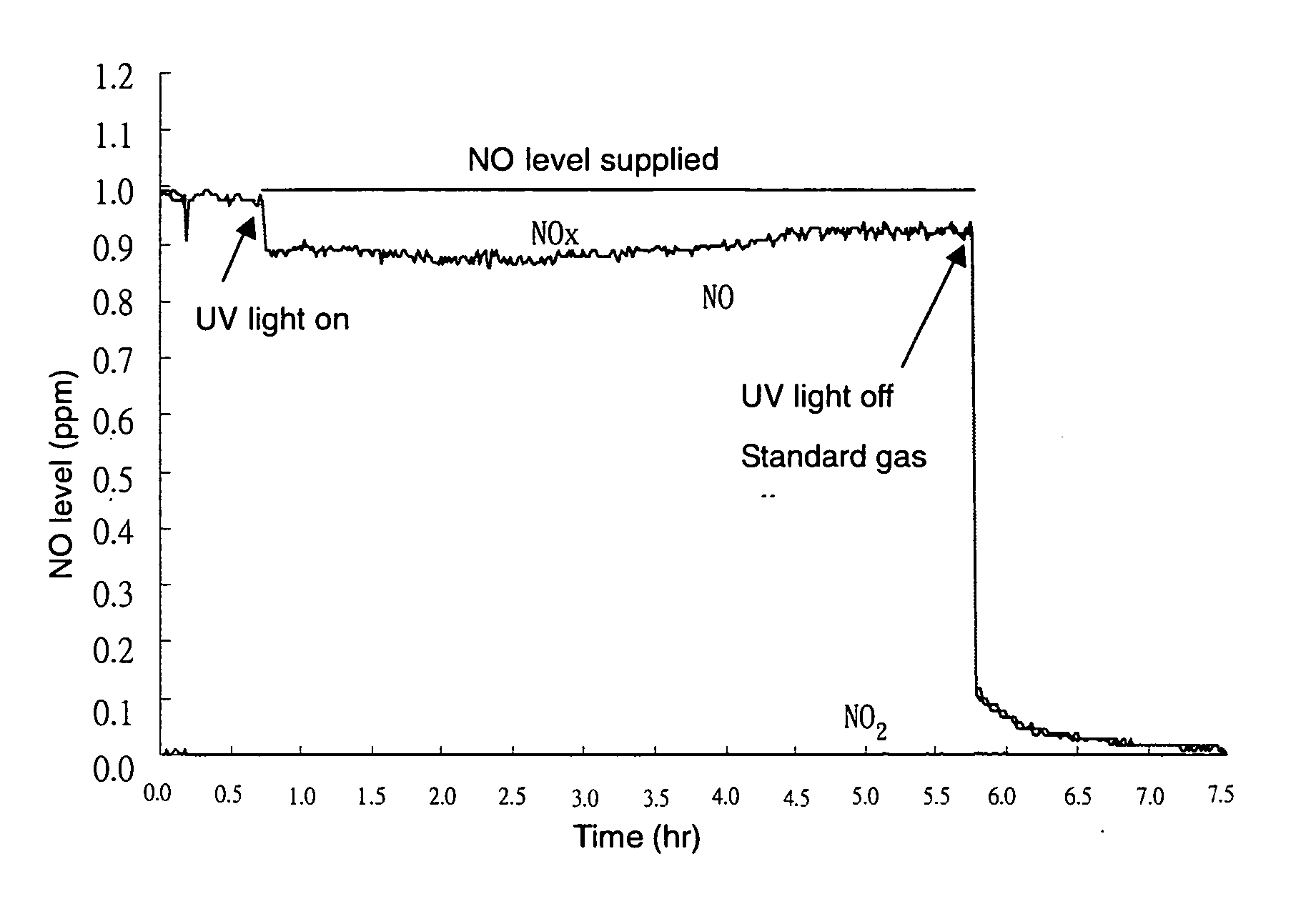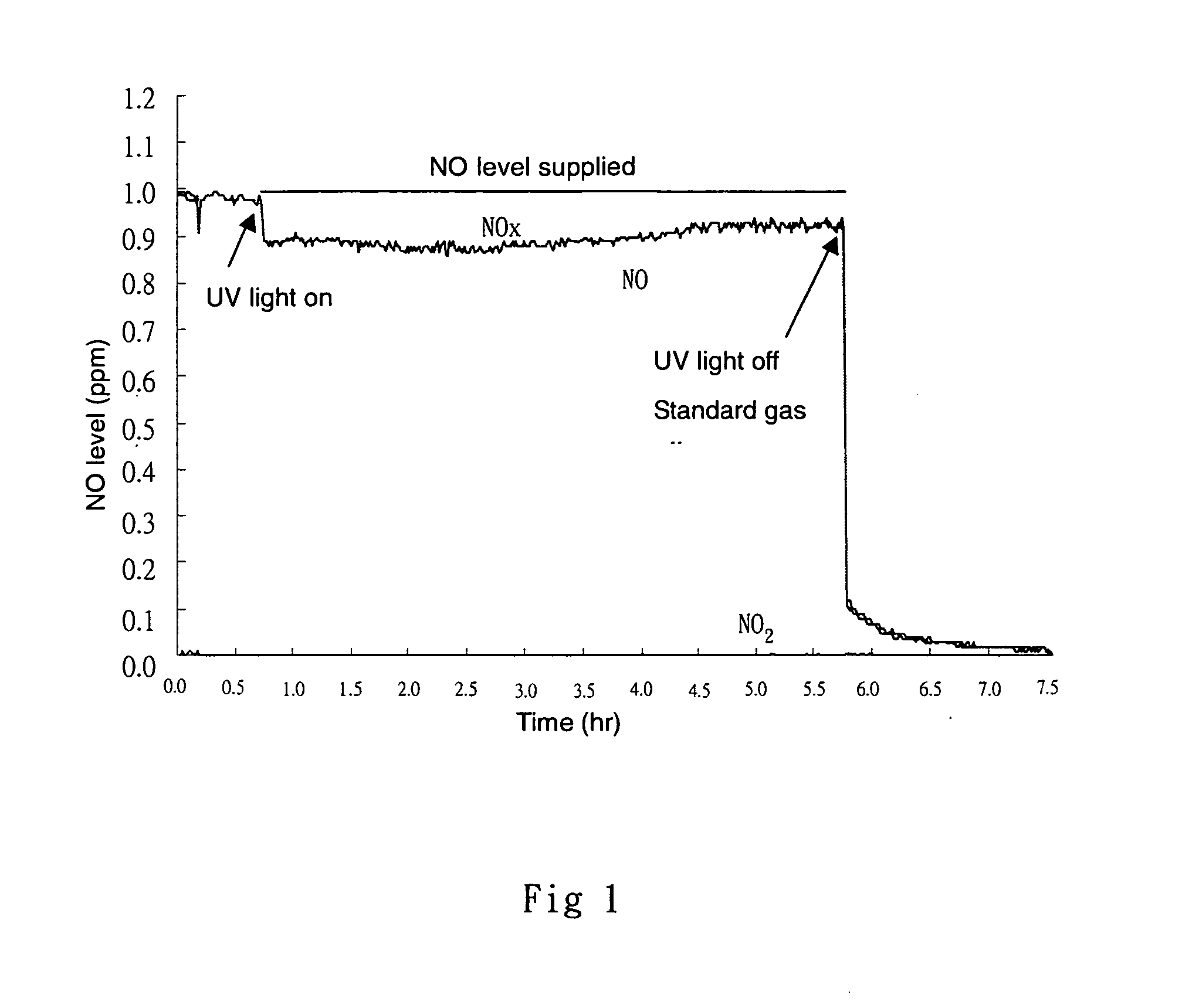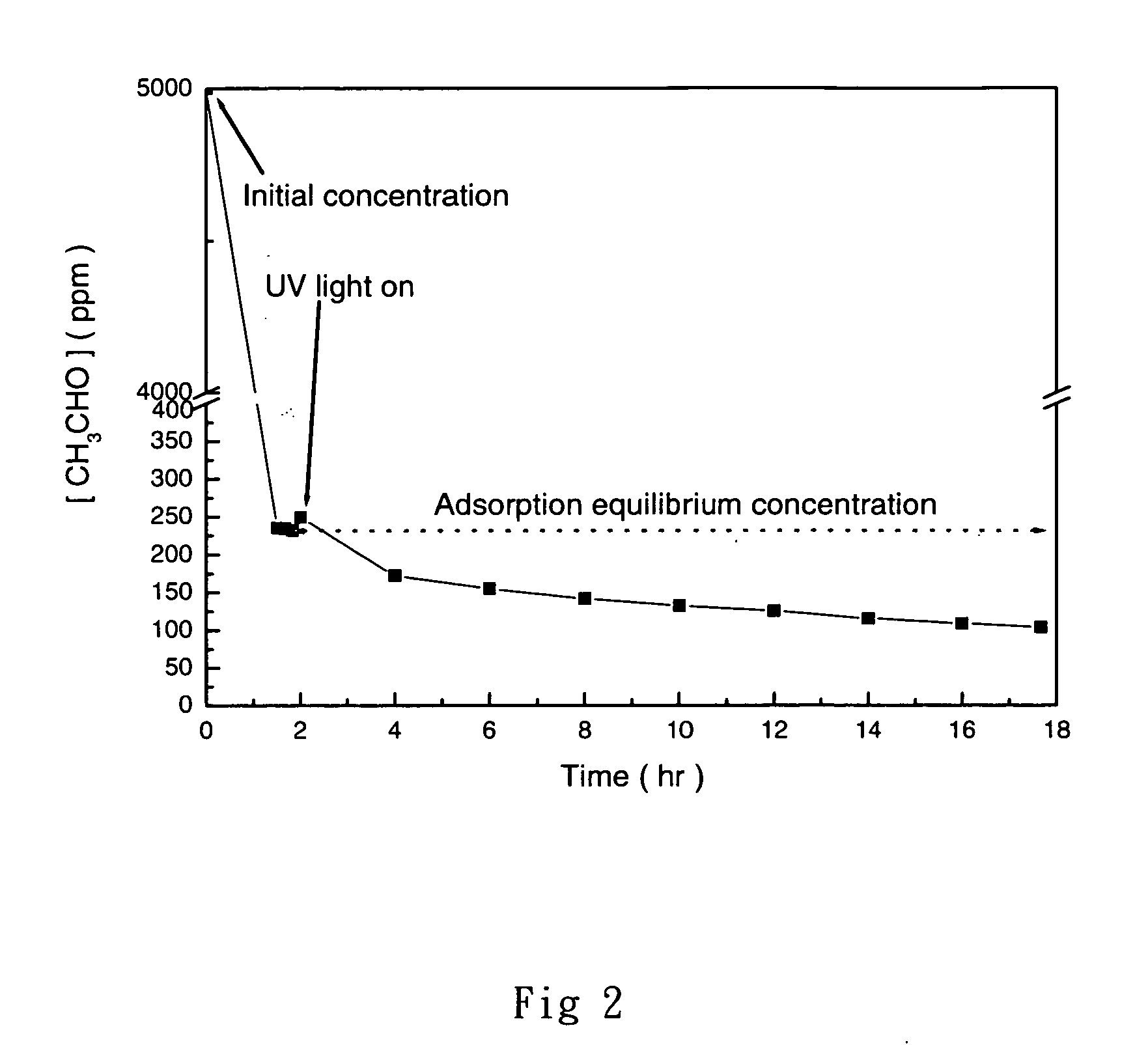Photocatalytic composite material, method for producing the same and application thereof
a composite material and photocatalytic technology, applied in physical/chemical process catalysts, metal/metal-oxide/metal-hydroxide catalysts, separation processes, etc., can solve the problems of reducing the activity of nano-sized photocatalysts, consuming energy, and unable to use nano-szied photocatalysts in the form of particles directly, so as to improve the cleaning effect of air quality or water quality
- Summary
- Abstract
- Description
- Claims
- Application Information
AI Technical Summary
Benefits of technology
Problems solved by technology
Method used
Image
Examples
example 1
Preparation of Photocatalytic Composite Material and Non-Woven Fabric with Photocatalytic Activity / Absorbency made of the Composite Material
Preparation of Photocatalytic Composite Material
[0030] Take 1 L of TiO2 sol containing 3 wt % TiO2 and particle size averaging 3-7 nm. Add 200 g activated carbon powder into the solution. The activated carbon powder preferably has large surface area and can pass through 20×60 mesh (more preferably activated carbon powder with BET surface area of more than 500 m2 / g). Mix and agitate the solution for one hour and then dry for 4-5 hours. Subsequently perform the step of washing with water and drying if necessary. The resulting solid is photocatalytic composite material made of TiO2 / activated carbon powder, where the weight percentage of TiO2 and activated carbon powder is approximately 8%.
Preparation of Non-Woven Fabric with Photocatalytic Activity and Absorbency
[0031] Spread photocatalytic composite material evenly over the surface of non-wo...
example 2
The Performance of Composite Material with Photocatalytic Activity and Adsorbency According to the Invention in NOx Removal
[0032] The testing of the photocatalytic composite material according to the invention in NOx removal was proceeded according to JIS R1701-1, where standard gas of NO and dry and moist air were fed into a flow meter to control the RH (74.4%), concentration (1 ppm), flow rate (3 L / min) and temperature (24° C.) of tested gas (NO), which was subjected to 5 hours of photocatalytic reaction. The light source was the lamp for an insect trap with main wavelength at 365 nm. Based on the test result as in FIG. 1, it is shown that the photocatalytic composite material of the invention exhibits photocatalytic activity to degrdate NOx gas. In 5 hours of continuous reaction, it has removed 8.5 μmol of nitrogen oxides. In addition, NO2, the intermediate product usually present in NO photocatalytic reaction was very few in this embodiment, indicating the excellent photocataly...
example 3
The Performance of Composite Material with Photocatalytic Activity and Adsorbency According to the Invention in Acetaldehyde Removal
[0033] The testing of the photocatalytic composite material according to the invention in acetaldehyde removal was proceeded according to photocatalyst performance evaluation test method IIb proposed by SITPA, where standard gas of CH3CHO and dry and moist air were fed into a batch reactor in the controlled conditions, i.e., RH (24.4%), concentration (5000 ppm), and temperature (18° C.), which was subjected to 16 hours of photocatalytic reaction. The photocatalytic composite material of the invention was placed in sealed sampling bag and allowed to undergo adsorption in the dark for 3 hours. After the adsorption reached equilibrium, the light source was turned on for the photo-decomposition experiment. As shown in FIG. 2, the feeding concentration of acetaldehyde was 5000 ppm, which reached an equilibrium of around 250 ppm after 3 hours of adsorption. ...
PUM
| Property | Measurement | Unit |
|---|---|---|
| size | aaaaa | aaaaa |
| size | aaaaa | aaaaa |
| particle size | aaaaa | aaaaa |
Abstract
Description
Claims
Application Information
 Login to View More
Login to View More - R&D
- Intellectual Property
- Life Sciences
- Materials
- Tech Scout
- Unparalleled Data Quality
- Higher Quality Content
- 60% Fewer Hallucinations
Browse by: Latest US Patents, China's latest patents, Technical Efficacy Thesaurus, Application Domain, Technology Topic, Popular Technical Reports.
© 2025 PatSnap. All rights reserved.Legal|Privacy policy|Modern Slavery Act Transparency Statement|Sitemap|About US| Contact US: help@patsnap.com



